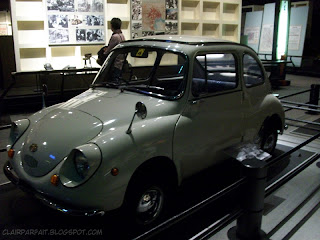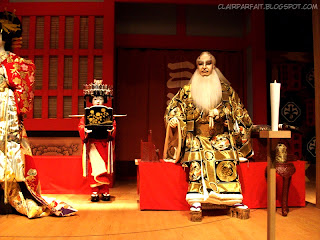Warning: Long picture post ahead!
Sorry for the lack of updates. So much has been going on and everything has been pretty hectic. I have been missing Tokyo a lot and I don't really even know how to describe how I've been feeling.
This is a much overdue post. Back in January near the end of my semester Daniel and I visited the Edo-Tokyo Museum with my literature teacher and other students from my class. The Edo-Tokyo Museum was really interesting and I managed to take a lot of pictures. My teacher gave us a personal tour of the museum, so it was really educational. For those who want to go themselves though, there are English written on several plaques (though I feel like they had been a little bit different from what they actually said in Japanese). They also offer free tour guides in English. Unfortunately, the lighting in there was really bad, so a lot of my pictures did not come out as well as I had hoped.
Since there was two parts to the museum, I will split this into two posts. This post will be dedicated to the Edo period of Japan, where Tokyo was known as "Edo."
When we first entered, we crossed over a replica of the Nihonbashi Bridge. Right below it is a stage as you see in this picture. Shortly after we arrived, a man came out and started playing the shamisen. It was a very lovely performance.
I believe this was a model of the other side of the Nihonbashi Bridge. Such a busy place.
The details on a partition.
Closeup of the detail on a different partition.
I believe this was a replica of someone's mansion. Maybe a daimyo?
Samurai armor.
A life-sized peek into the daily life of a home during that time.
Some porcelain plates and jars (?) from the time.
A page from a book.
I think this was a painting of the fire department.
This is a life-size model of an artisan of some sort, if I remember right.
Pictures detailing the various types of work the common people did during the Edo period.
A display of how the the mass-production of wood block prints worked, with each block printing a different part of the image.
Different pictures that were mass-produced through their printing technology.
A novel from the Edo period. They were quite known for their pictures.
Another picture novel.
A boat.
A little history of the different types of coins.
This might have been a model of the black market area? I do not quite remember anymore.
I do not really remember what this was...
Daniel trying his hand at carrying water buckets on his back.
A mikoshi (portable shrine).
A really elaborate model of a bridge and port that connected to it.
Close-up of one of the boats. It was impressive how detailed each model was.
Popular hair styles worn by women of the Edo period.
A woman's kimono.
A close-up of another woman's kimono.
The above three images are life-size models of a high-ranking courtesan and who would typically be included in her entourage. The platform shoes they wore are incredible.
A painting (or maybe wood print) of a high-ranking courtesan.
I believe this is the sort of kimono a courtesan would wear.
I do not quite remember what this model is supposed to be.
A model of priests carrying a mikoshi (a portable shrine, like I mentioned above).
I am assuming this is a model of a festival honoring a god of some sort. In this case, a chicken god...?










































